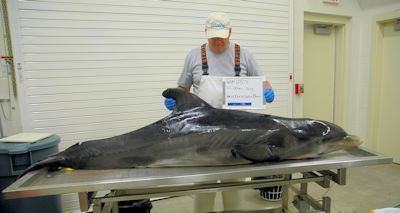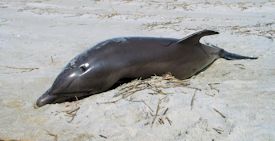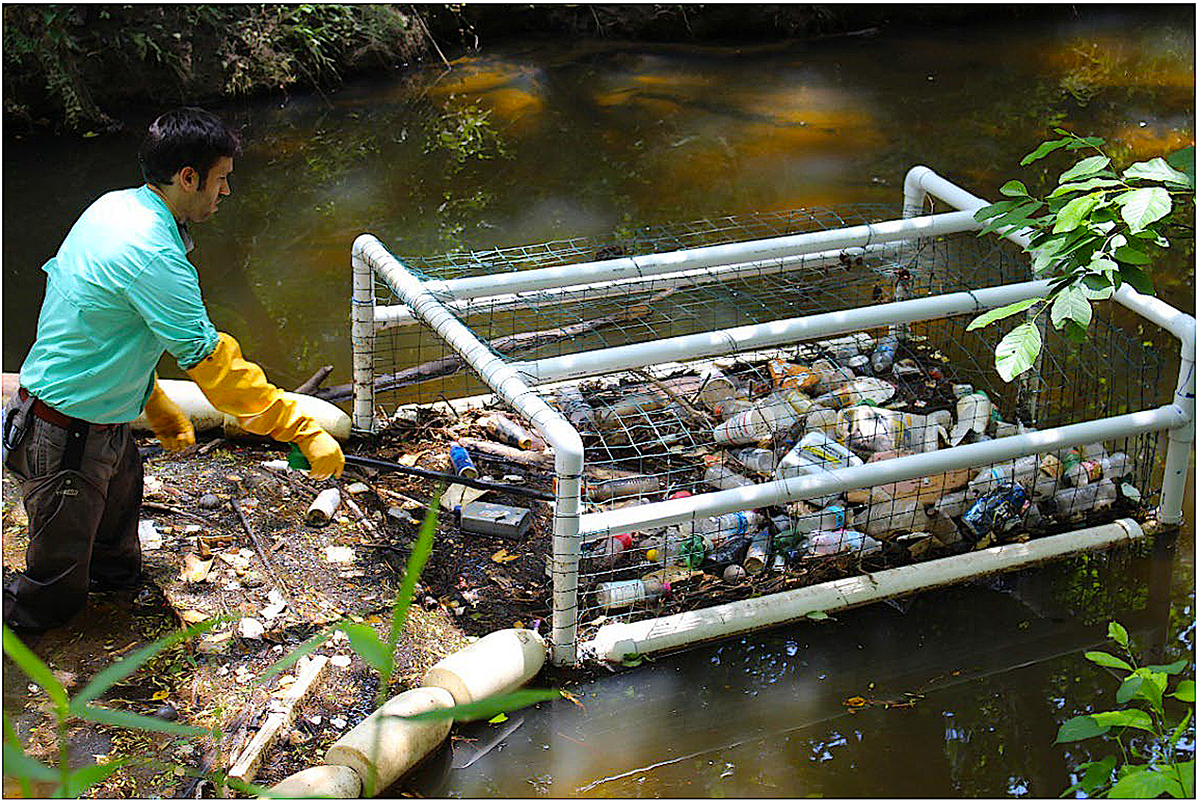Last of two parts
WILMINGTON — Dolphins that strand along the southern coast of North Carolina often end up in a small building on the campus of the University of North Carolina-Wilmington. Inside the Louise Oriole Burevitch Laboratory are a human autopsy table and a specially built table for what is obviously meant for much larger creatures. A hook on a chain attached to a track on the ceiling dangles overhead, used to lift large dolphins and small whales onto the tables.
While some dolphins are necropsied on the beach, many are brought here where they can be examined and dissected. Samples are collected and shipped all across the country, including to the University of California at Davis for molecular biology and to the University of Illinois for histology to confirm the presence of disease.
Supporter Spotlight
“Most of our work during a necropsy is to gather samples to better understand this disease process,” explained Ann Pabst, a professor of biology and marine biology at UNCW. “But we are also trying to support as many different kinds of research as we can, because this is a rare opportunity. This animal is dead and we try to get as much information as possible.”
While researchers can confirm that morbillivirus is to blame for the dolphin die-off, what they can’t say is why it is happening now.
 William McLellan is about to perform a necropsy on a bottlenose dolphin at the UNCW lab. Photo: Marine Mammal Stranding Program, UNCW |
“We know why the disease might have the potential to make a large impact but we don’t know the series of events that caused it to happen right now… Why now? That is kind of the $100,000 dollar question. And we may never have the answer,” explained Pabst.
What they do know is that, 25 years after the last morbillivirus outbreak, there is now a population of dolphins that no longer have immunity to the virus. Wild dolphins have a life span of 25-30 years meaning that the majority of the population was not alive during the last outbreak, leaving the population vulnerable to another outbreak of the same virus.
And while no environmental trigger has been identified in either die-off, scientists do know that the health of the ocean environment can have a large effect on the health of the marine mammal population. But they stop short of saying just what kind of effect.
Supporter Spotlight
The 1987 outbreak was compounded by a biotoxin called brevetoxin. This toxin was found in high levels in the water at the same time that the virus was killing a large portion of the dolphin population.
As Pabst explains no one knows exactly what role this played in the high mortality rates, but it certainly didn’t help. “It was predominantly morbillivirus (killing the animals) that was probably exacerbated by this biotoxin. So they got this double hit, a perfect storm,” she said.
Unfortunately history appears to be repeating itself. Dolphins are again facing a perfect storm of catastrophes. Higher-than-average bottlenose dolphin strandings are occurring even in areas where the morbillivirus has not yet reached. And while scientists are hesitant to name a specific cause of these increased mortality rates, they do recognize that many of the populations are facing threats to their environment. There is evidence that dolphins in the Gulf of Mexico are still struggling from the effects of the BP Deep Water Horizon oil spill in 2010, and harmful algal blooms are linked to the deaths of hundreds of dolphins in the Indian River Lagoon in Florida.
This onslaught of threats has lead the National Oceanic and Atmospheric Administration to declare each of almost all the sites of dolphin deaths as a “unusual mortality event,” or UME, a label that recognizes a significant die-off in a population of marine mammals and the need for an immediate response. Only the west coast of Florida is currently not experiencing a UME.
“Bottlenose dolphins have been named sentinels of coastal ecosystem health,” said Pabst. “If in virtually all of its geographic distribution, from the Gulf of Mexico to the U.S. Atlantic coast, animals are suffering some kind of UME, it likely suggests that there are issues that we should be considering,”
Toxic contaminants in the water have also long been one of the issues of concern for researchers. Dolphins are a known to store toxins in their blubber which could threaten the health of already sick animals.
“There is no doubt that contaminant loads are high in these animals,” explained William McLellan, a UNCW biology professor that coordinates the strandings of marine mammals in the state. “The animals feel crappy so they don’t feed. Well then they start spending those lipid resources, and those lipids hold contaminants that start spitting back into the animal that is already immunocompromised.”
 A dead dolphin on a beach near Wilmington. Photo: Marine Mammal Stranding Program, UNCW |
Just what role this is playing in the morbillivirus outbreak is unknown Pabst is hesitant to directly link contaminant load in these animals with the high rates of death. “But we need to be very precise,” she said. “We cannot, because we don’t have the data, directly link an animal’s decline in health with toxin load. But what we do know is that bottlenose dolphins are in a compromised coastal environment where they are exposed to human made toxins. So we have to acknowledge that humans play a role in creating the health of the environment that the animals are in.”
So far researchers have focused on identifying the viral pathogen linked to the deaths and have not examined the levels of toxins in necropsied animals. But McLellan notes that this is likely because contaminant loads are already assumed to be heavy.
“Only because, the terrible thing is, it is not going to be anything new,” he said. “A whole bunch of samples were run from the animals in 1987 and they had the highest levels of mercury ever tested in a cetacean.”
The current outbreak is expected to continue for at least several more months.
“Since it is already in Florida, we are not going to be out of this until March or April at the earliest,” McLellan said wearily. “Southern North Carolina will stay in it the entire time, and we may actually get a pulse [of increased deaths] as these animals start moving north again.”
With large-scale funding cuts to stranding response programs and to many of the agencies involved in the recovery and investigation of animal deaths, many of those involved recognize that they need to marshal their resources now in order gain the greatest understanding from this event.
“A lot of the money is going away, but as a network we want to use our resources now to get this one really documented so that we know when it started, we know that is moving, and we can actually get a better picture out of this. It’s not easy, but a lot of folks are working really hard on it,” said McLellan.
And as Pabst notes, these research efforts may be critical to the recovery of the dolphin population. “We do know that these animals are going to need our extra protection,” she said. “We don’t know now if this is going to change the status of the stocks, but it is well within the realm of possibility. Even if it didn’t, it would still be incumbent upon us to do everything we can to try to protect them because they have suffered huge losses.”
Report sightings of stranded or dead marine mammals to 911 or your local municipality.







